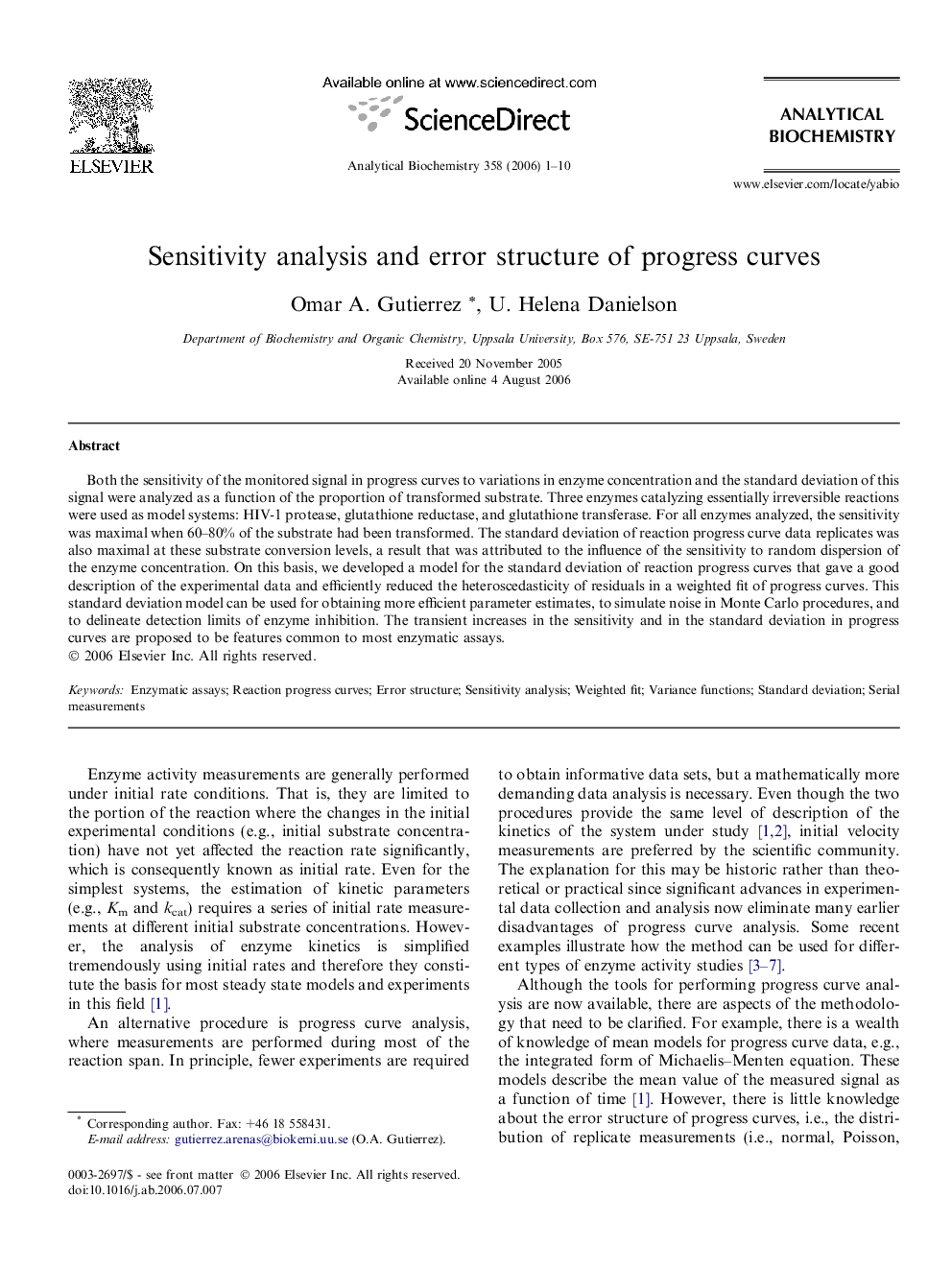| Article ID | Journal | Published Year | Pages | File Type |
|---|---|---|---|---|
| 1177450 | Analytical Biochemistry | 2006 | 10 Pages |
Both the sensitivity of the monitored signal in progress curves to variations in enzyme concentration and the standard deviation of this signal were analyzed as a function of the proportion of transformed substrate. Three enzymes catalyzing essentially irreversible reactions were used as model systems: HIV-1 protease, glutathione reductase, and glutathione transferase. For all enzymes analyzed, the sensitivity was maximal when 60–80% of the substrate had been transformed. The standard deviation of reaction progress curve data replicates was also maximal at these substrate conversion levels, a result that was attributed to the influence of the sensitivity to random dispersion of the enzyme concentration. On this basis, we developed a model for the standard deviation of reaction progress curves that gave a good description of the experimental data and efficiently reduced the heteroscedasticity of residuals in a weighted fit of progress curves. This standard deviation model can be used for obtaining more efficient parameter estimates, to simulate noise in Monte Carlo procedures, and to delineate detection limits of enzyme inhibition. The transient increases in the sensitivity and in the standard deviation in progress curves are proposed to be features common to most enzymatic assays.
